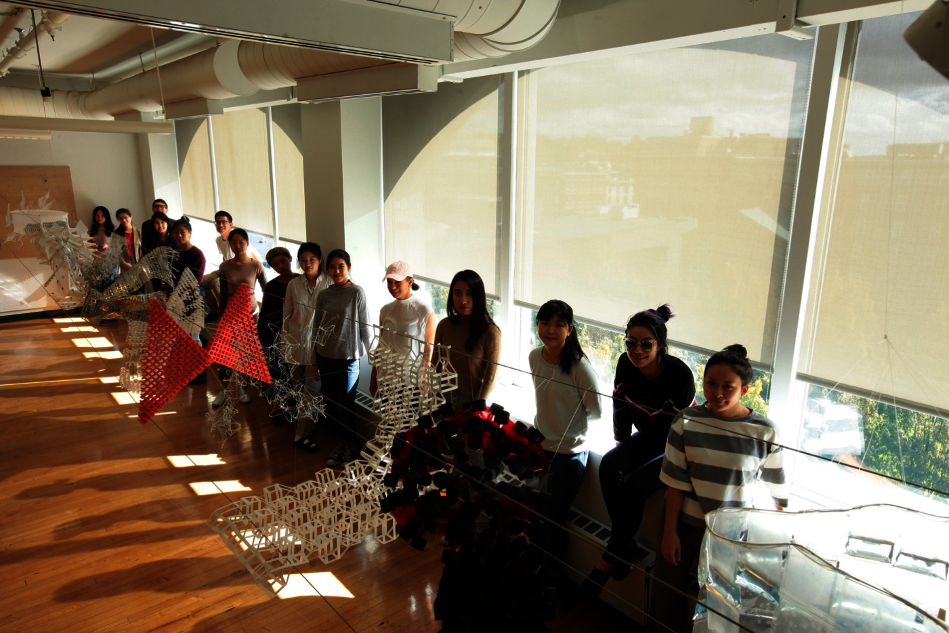Interior Architecture
Image

EVENTS
Riding Across the Pell
Saturday 10/8, 11am–4pm
CIT, Room 103
Have you heard about the Metaverse, extended realities, experienced your designs in virtual reality (VR), or played an augmented reality (AR) game like Pokémon Go? We are amid a technological transformation with the potential to profoundly alter and extend creative practices. In a not-too-distant future in which our perception of reality blends the physical “real” and the virtual, what will our exhibitions look like?
In summer 2021, Crossing the Pell opened in the Sol Koffler Gallery. The exhibition displayed proposals for introducing bike and pedestrian access to the Claiborne Pell Bridge, the longest suspension bridge in New England. The continuing research into the use of AR/VR elements allow the visitor to walk or bike across the bridge.
Image

Sophomore Installation
Friday 10/7, 3:30–5:30pm
Saturday 10/8, 10am–4pm
CIT, 6th floor studio
The installation is based on the production of 2D / 3D objects with the inherent potential for aggregation, made of sheet material followed by the exploration of relevant assembly methods permitting the construction of larger entities to be installed in a cable framework. Concentrated light, scattered or reflected by the objects in space, will create a complex projected world of shadows on an interchangeable solid or perforated monochromatic surfaces of different textures and levels of reflectivity.
Open Studio events do not require pre-registration.
MAP
5
CIT
169 Weybosset Street
- Riding the Pell
- Room 103
- Saturday 10/8, 11am–4pm
- Sophomore installation
- 6th floor studio
- Friday 10/7, 3:30–5:30pm
- Saturday 10/8, 10am–4pm
ABOUT
At the intersection of architecture, conservation and design, Interior Architecture takes an innovative approach to the reuse and transformation of existing buildings. Advanced design studios focused on adaptive reuse are central to both the undergraduate and graduate programs. And unlike the fields of interior design and decoration, Interior Architecture looks less at the application of surface materials than at understanding the design of buildings from inside out.